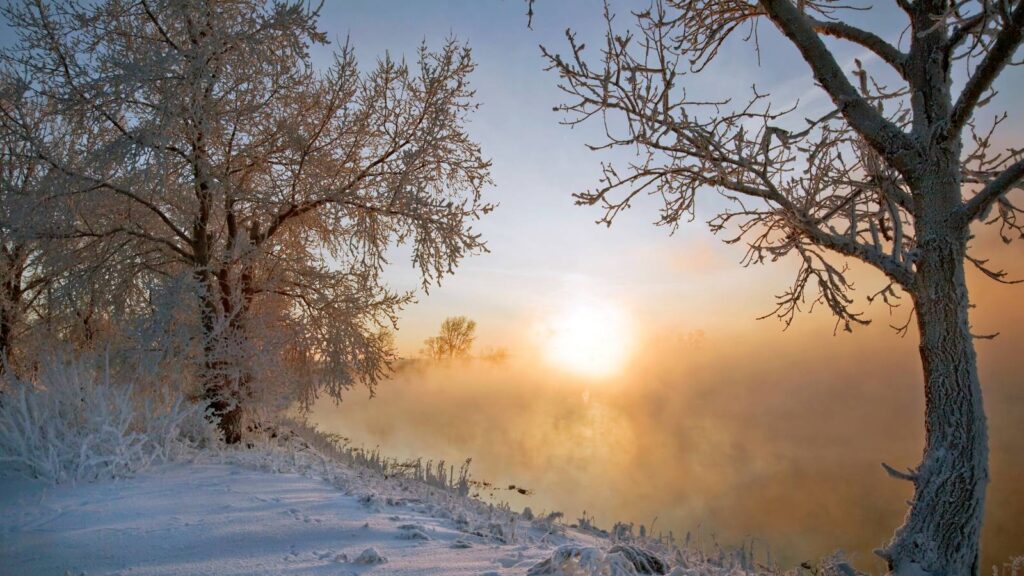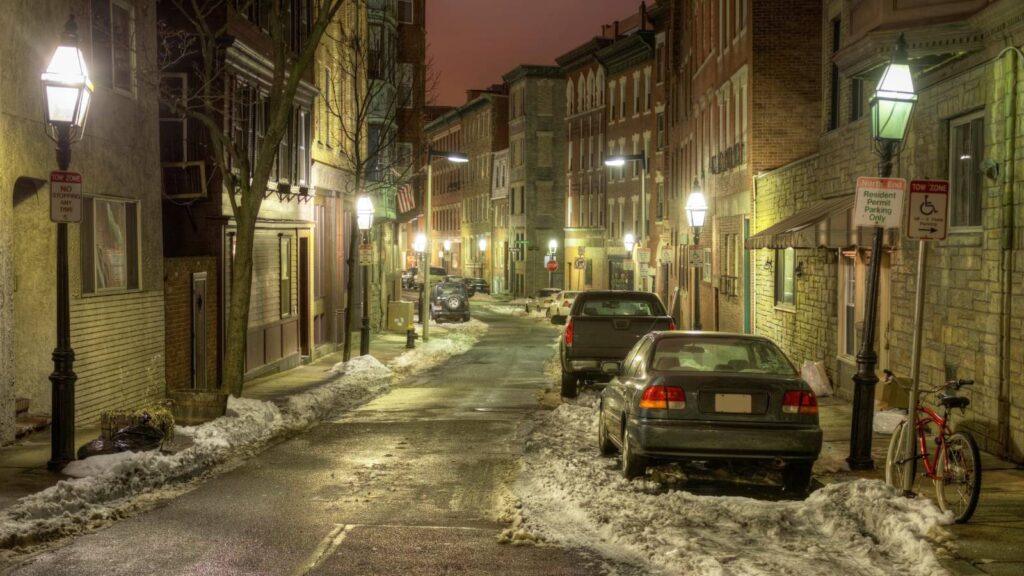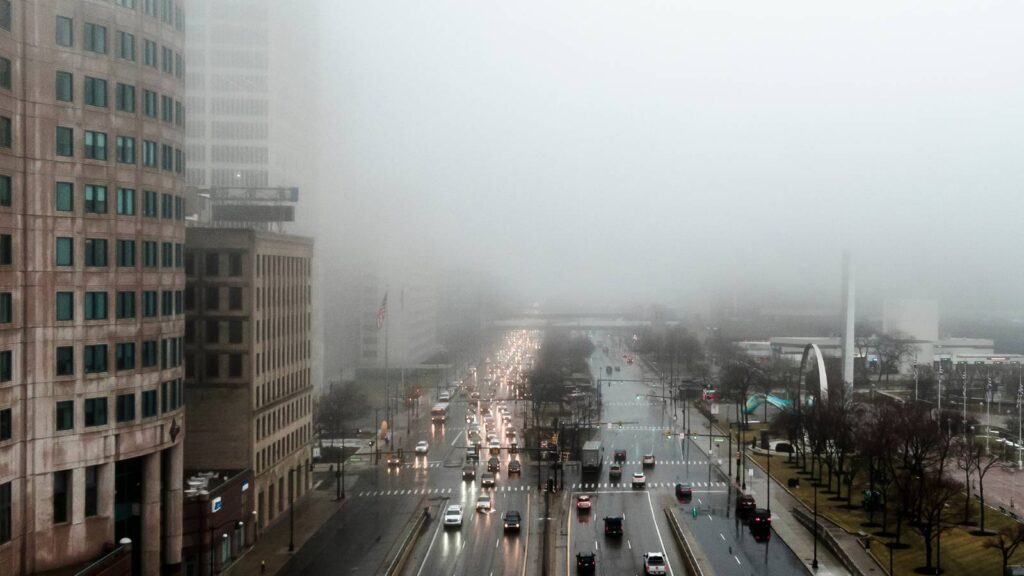In 2025, the world continues to witness extreme temperature variations due to a combination of global climate shifts and persistent Arctic chills. While much of the globe grapples with heatwaves, there remain countries where surviving in sub-zero temperatures is a daily reality.
Best Winter Vacations in the US for Snow Lovers & Beach Seekers
In fact, in some regions, the thermometer plunges well below -50°C, making life extraordinarily harsh and challenging. In this article, I take you deep into the coldest country in the world and also some of the top 10 coldest countries in 2025 based on their winter extremes, geographical features, and survival conditions.
Understanding What Makes a Country the Coldest

To determine the coldest country in the world, scientists and researchers consider several factors — including average winter temperature, record low temperatures, latitude, elevation, proximity to the Arctic Circle, and climatic conditions like Siberian winds. Countries located at higher latitudes or with mountainous terrains often experience prolonged winters and extreme colds, particularly during December to March.
Best Winter Getaways in January for Snow Lovers
Let’s see which countries made it to the top in 2025.
Top 10 Coldest Country in the World
1. Russia – Dominating the List as the Coldest Country in the World
Average Winter Temperatures: -30°C to -50°C
Lowest Recorded Temperature in 2025: -57°C in Oymyakon, Siberia
Russia holds onto its title as the coldest country in the world with temperatures in 2025 dropping to an unbearable -57°C in the village of Oymyakon, located in the Sakha Republic. Known as the coldest inhabited place on Earth, Oymyakon is a true representation of Russia’s Arctic extremes. The Siberian region, which covers much of Russia’s eastern territory, remains frozen for more than half the year.
Russia’s massive landmass, much of it located above the Arctic Circle, is one of the main reasons why it dominates this list. Its distance from any oceanic body means it lacks natural warmth, and Siberian winds push the mercury far below zero. Winters are extremely long, with some areas receiving only a few hours of daylight, and temperatures rarely rise above freezing.
Living conditions in places like Yakutsk are harsh. Cars are kept running to avoid engine freeze, and homes are built with thick insulation and heavy-duty heating. Despite these brutal conditions, communities are tightly knit, and locals have adapted over centuries. From fur-lined clothing to underground heating systems, survival here is a result of smart innovation and deep cultural endurance.
2. Canada – Frozen Wilderness of the North
Average Winter Temperatures: -20°C to -45°C
Lowest Recorded Temperature in 2025: -49°C in Yukon Territory
Canada continues to rank among the coldest countries in the world. In 2025, the Yukon Territory reported lows of -49°C, making it one of the coldest regions outside Russia. The northern territories—Yukon, Nunavut, and the Northwest Territories—are particularly vulnerable to freezing Arctic air masses that sweep down from the North Pole.
These regions are isolated and blanketed by snow for much of the year. The bitter cold, along with limited daylight, makes travel and outdoor activity risky during peak winter months. Cities like Yellowknife and Whitehorse have developed resilient infrastructures to withstand the worst weather, including heated buildings and robust snow removal systems.
Despite the challenges, Canadians embrace the winter season with a sense of pride. Outdoor activities like ice hockey, skiing, and snowmobiling are part of everyday life. Indigenous communities blend traditional survival techniques with modern methods, showing how cultural knowledge plays a crucial role in enduring extreme climates.
3. Mongolia – Cold Steppes and Nomadic Strength
Average Winter Temperatures: -25°C to -45°C
Lowest Recorded Temperature in 2025: -46°C in Uvs Province
In 2025, Mongolia experienced bitter temperatures reaching -46°C, especially in the remote Uvs Province. The country’s climate is defined by its high elevation, landlocked geography, and dry continental conditions. As a result, winters here are both long and dangerously cold, with little relief from snow or ice.
What makes Mongolia unique is its large population of nomads who still follow a traditional way of life. Families move across vast, snow-covered steppes living in gers—round, insulated tents that are heated using coal or dung fires. Despite the freezing conditions, many Mongolians continue to raise livestock and live off the land.
However, winters in Mongolia can be devastating. Natural disasters like dzud—a phenomenon where a harsh winter follows a dry summer—can lead to mass livestock deaths and food shortages. Yet, the Mongolian people persist, relying on centuries-old survival knowledge and an unbreakable connection to their environment.
4. Norway – Arctic Extremes in the Land of Fjords
Average Winter Temperatures: -15°C to -40°C
Lowest Recorded Temperature in 2025: -42°C in Finnmark
Norway continues to face extreme cold, with the Finnmark region recording lows of -42°C this year. Northern Norway lies within the Arctic Circle, and during the winter months, it is subject to polar nights and freezing temperatures that can make life extremely difficult.
Even though Norway is surrounded by the sea, the inland and mountainous areas experience very little temperature moderation. Cold air masses settle in these valleys and plateaus, leading to long-lasting snow cover and sub-zero conditions that stretch for several months each year.
Despite the frigid weather, Norway is well-prepared. Its towns and cities are equipped with heated roads, modern buildings with advanced insulation, and reliable snow management systems. Culturally, Norwegians embrace winter as a time for community, recreation, and celebrating natural beauty, including the aurora borealis.
5. Kyrgyzstan – Icy Mountains and Isolated Villages
Average Winter Temperatures: -20°C to -40°C
Lowest Recorded Temperature in 2025: -44°C in Naryn Province
Kyrgyzstan, with its mountainous landscape and high-altitude towns, recorded winter temperatures of -44°C in 2025, particularly in the Naryn Province. This Central Asian nation is dominated by the towering Tien Shan mountain range, which creates a naturally cold and snowy environment throughout the winter months.
Rural areas are often cut off due to heavy snow and icy roads. Residents in these highlands must stock up on fuel, food, and other essentials before winter hits. Coal stoves are commonly used for heating, and layered wool clothing becomes essential for day-to-day survival.
Although infrastructure in Kyrgyzstan is less developed than in wealthier nations, people have learned to adapt through strong community networks and traditional survival strategies. The landscape may be harsh, but the spirit of the people who call it home remains strong and grounded.
6. Finland – Frozen Forests of Lapland
Average Winter Temperatures: -20°C to -38°C
Lowest Recorded Temperature in 2025: -40°C in Lapland

Finland saw a significant drop in temperatures this year, with Lapland reporting lows of -40°C. Located in Northern Europe, Finland’s winters are defined by persistent cold, heavy snowfalls, and very limited daylight—particularly during December and January when the sun barely rises above the horizon.
Lapland, famous for its reindeer herders and as the mythical home of Santa Claus, becomes a winter wonderland during this season. However, life here isn’t just magical—it’s also extremely challenging. Heating systems must work non-stop, and homes are insulated using the latest technologies to combat energy loss.
What makes Finland special is its ability to turn cold into comfort. Saunas are an integral part of Finnish life and offer a way to relax and recover from the cold. The country also boasts advanced district heating systems that serve entire neighborhoods, ensuring safety and comfort even during extreme winter storms.
7. Iceland – Ice, Wind, and Geothermal Warmth
Average Winter Temperatures: -10°C to -35°C
Lowest Recorded Temperature in 2025: -37°C in the Highlands
In 2025, temperatures in Iceland’s interior highlands dropped to a chilling -37°C. Although coastal areas are relatively milder due to ocean currents, the inland areas often experience strong Arctic winds and severe snowstorms that lead to whiteout conditions.
Despite the cold, Iceland is unique because of its volcanic geothermal energy, which provides sustainable heat to homes, schools, and even sidewalks in major cities like Reykjavik. These systems help melt snow and prevent road freeze, making Iceland one of the most energy-efficient cold countries in the world.
Still, during harsh winters, travel across the highlands can be treacherous. Icelanders are prepared for these challenges and rely on weather alerts, insulated vehicles, and community cooperation to stay safe in their remote and icy homeland.
8. Tajikistan – Cold Roof of Central Asia
Average Winter Temperatures: -15°C to -35°C
Lowest Recorded Temperature in 2025: -38°C in Gorno-Badakhshan
Tajikistan, another mountainous Central Asian country, faced temperatures as low as -38°C in the Gorno-Badakhshan region this winter. The region is located at a high altitude and surrounded by some of the tallest peaks in the world, making it especially vulnerable to heavy snowfall and cold air pockets.
Infrastructure in remote areas is often limited, making survival dependent on traditional heating methods and communal support. Electricity shortages are common in these regions, and access to healthcare and supplies can be cut off for days after severe snowstorms.
Nevertheless, residents have adapted by preparing food stores in advance and relying on close family ties. Despite its cold climate, Tajikistan remains a culturally rich nation with communities that display incredible resilience in the face of winter hardships.
9. Sweden – Deep Freeze in the Scandinavian North
Average Winter Temperatures: -15°C to -30°C
Lowest Recorded Temperature in 2025: -34°C in Norrland
Sweden’s Norrland region reported bitterly cold conditions this year, with temperatures dipping to -34°C. As one of Europe’s northernmost nations, much of Sweden experiences long winters with extensive snowfall, frozen lakes, and bitter Arctic winds.
In the far north, the sun doesn’t rise for several weeks during the winter, a phenomenon known as the polar night. This darkness can be psychologically taxing, especially when paired with extreme cold. Yet, Sweden’s robust infrastructure and high standard of living help people cope.
Residents benefit from well-designed homes, public transportation that runs efficiently even in snowstorms, and widespread access to winter sports. Community warmth and cultural traditions help people stay mentally and physically healthy during these long, dark months.
10. Estonia – Baltic Winters and Digital Resilience
Average Winter Temperatures: -10°C to -30°C
Lowest Recorded Temperature in 2025: -33°C in Võru County
Estonia may be one of the smallest nations on this list, but it is still among the coldest countries in the world in 2025. In Võru County, temperatures fell as low as -33°C this winter. While the Baltic Sea moderates the temperature slightly, Arctic air masses and snowstorms still make Estonia’s winters extremely challenging.
Estonians have embraced a digital way of life, which helps minimize the need for travel during snowstorms. Remote work, online schooling, and government e-services have become the norm, allowing daily life to continue even when weather conditions make outdoor activity nearly impossible.
In rural areas, homes are still heated using wood stoves, and residents prepare in advance by stocking fuel and food. Despite the cold, Estonia’s blend of modern technology and traditional preparedness helps its citizens stay ahead of nature’s harshest challenges.
Final Ranking – Coldest Countries in the World in 2025
| Rank | Country | Lowest Temp (2025) | Notable Cold Region |
|---|---|---|---|
| 1 | Russia | -57°C | Oymyakon, Siberia |
| 2 | Canada | -49°C | Yukon Territory |
| 3 | Mongolia | -46°C | Uvs Province |
| 4 | Kyrgyzstan | -44°C | Naryn Province |
| 5 | Norway | -42°C | Finnmark |
| 6 | Finland | -40°C | Lapland |
| 7 | Iceland | -37°C | Highlands |
| 8 | Tajikistan | -38°C | Gorno-Badakhshan |
| 9 | Sweden | -34°C | Norrland |
| 10 | Estonia | -33°C | Võru County |
FAQs
1. What is the coldest country in the world in 2025?
Russia is the coldest country in the world in 2025, with temperatures reaching as low as -57°C in Siberia’s Oymyakon region.
2. Why is Russia the coldest country in the world?
Russia’s vast Arctic territory, lack of oceanic warmth, and Siberian winds make it the coldest inhabited country on Earth.
3. Which place in Russia is the coldest?
Oymyakon in Siberia holds the title for the coldest inhabited place, often recording temperatures below -50°C.
4. What are the top 5 coldest countries in the world in 2025?
The top five coldest countries in 2025 are Russia, Canada, Mongolia, Kyrgyzstan, and Norway, all with temperatures below -40°C.
5. How do people survive in the coldest countries?
Residents use insulated homes, heavy clothing, and reliable heating systems to survive extreme cold in the world’s coldest countries.
6. Can tourists visit the coldest country in the world?
Yes, tourists can visit Russia and other cold countries, but must prepare with special gear and travel precautions.
7. What kind of clothing is worn in extremely cold countries?
People wear thermal layers, insulated coats, fur-lined hats, and waterproof boots to withstand the severe cold.
8. Does climate change affect the coldest countries?
Yes, even the coldest countries in the world are experiencing warmer winters, melting permafrost, and shifting weather patterns.
9. Are winters in Canada colder than in Russia?
Canada has extreme winters, especially in Yukon and Nunavut, but Russia remains colder overall due to its vast Arctic region.
10. What is the coldest inhabited place on Earth?
Oymyakon, Russia is the coldest inhabited place on Earth, making Russia the coldest country in the world by record temperatures.






